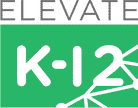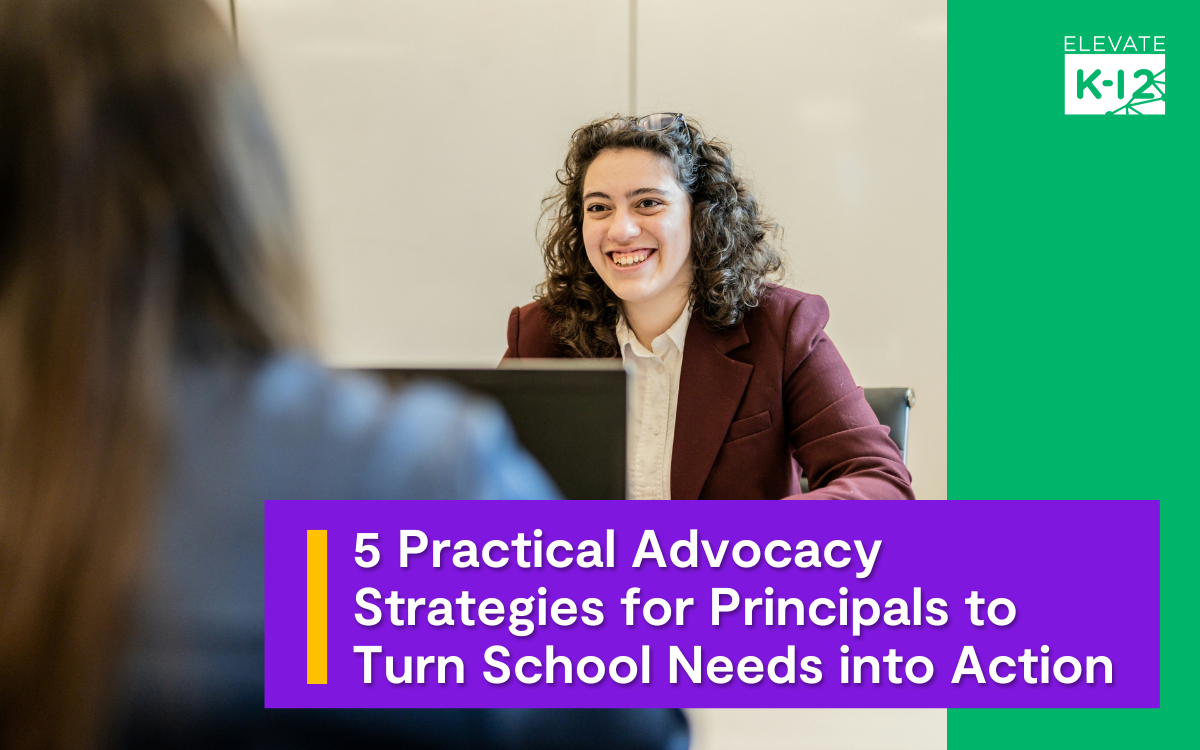Bridging the Gap Between Schools and Districts
The start of a new school year is full of energy and possibility, but it also shines a light on just how much is asked of principals. You are expected to keep instruction consistent, support your teachers, maintain culture, and reassure families, often while navigating challenges that extend far beyond your control.
Many of the levers that determine whether a school thrives sit at the district level, like staffing, program funding, policy decisions, and even curriculum flexibility. Yet principals are the ones who feel the impact first when a classroom goes unfilled, when attendance dips, or when families grow uneasy about changes. That gap between responsibility and authority is what makes strong advocacy strategies essential to the principalship.
Advocacy is not about pushing an agenda. It is about making sure the realities inside your school are understood, and that district leaders have clear, actionable insight into your school’s needs. This guide outlines practical advocacy strategies to help you frame those realities, bring forward solutions, and influence decisions that shape the success of your school year.
5 Advocacy Strategies for Principals to Drive District Action
Effective advocacy strategies are about more than raising concerns. It is about showing a path forward. These advocacy strategies will help you elevate school realities, mobilize support, and secure the resources your staff and students need.
1. Lead With Evidence
Numbers speak loudly in district conversations. When advocating for your school’s needs, start by grounding your case in data that shows the tangible impact on students. Attendance rates, discipline referrals, and assessment scores can illustrate how disruptions inside classrooms ripple into broader outcomes.
For example, instead of simply saying, “We’re short on staff,” you might present how a grade level with a persistent vacancy has lower attendance, higher behavior incidents, or slower growth on recent assessments compared to peers. Data like this makes the issue harder to dismiss and connects your daily challenges to the district’s accountability goals.
But numbers alone are not enough. Pair them with stories that bring the data to life, like a student who missed weeks of consistent instruction, or a teacher stretched across multiple classes who feels on the brink of burnout. District leaders often balance spreadsheets and dashboards; your role is to humanize what those numbers mean in the day-to-day life of a school.
By combining clear evidence with authentic stories, principals can make their advocacy both credible and compelling.
2. Translate School-Level Problems into District-Level Risks
District leaders often have to weigh competing priorities across many schools. To make your advocacy resonate, frame school-level challenges in terms of the district’s goals and obligations.
Instead of presenting a vacancy as “just a coverage issue,” connect it to what matters at the district level: academic growth, compliance, and equity. For example:
- A long-term science vacancy isn’t only about who is teaching the class; it’s a risk to meeting state testing benchmarks in a core subject.
- An unfilled special education role isn’t just harder on your staff; it puts the district at risk of falling out of compliance with IDEA and IEP delivery.
- A spike in chronic absenteeism isn’t only a culture concern; it threatens the district’s ability to meet its attendance and equity goals.
By drawing these connections, you position the school’s needs as part of the district’s larger success. When district leaders see that addressing your challenge helps them meet their own performance and compliance targets, your advocacy is far more likely to spark action.
3. Bring Solutions, Not Just Problems
One of the quickest ways to lose traction in advocacy is to arrive with a list of challenges but no clear path forward. District leaders are balancing pressures from every direction, and they often have limited bandwidth to design solutions from scratch. Principals who show up with both the problem and a viable option to solve it are more likely to see action.
This does not mean you need every detail mapped out. What matters most is pairing the reality you are experiencing in your school with a practical, scalable idea that leadership can evaluate.
For example, you may see that too many students are falling behind in math and reading, and you know that after-school support could help close those gaps. But your budget is limited, and your current staff are already stretched too thin to take on more. Rather than going to the district with just the problem, first consider what they will care about when evaluating potential solutions. In this case, they will want to know that the option:
- provides high-quality instruction aligned with district standards,
- has evidence of measurable impact, and
- has a clear funding path.
After researching potential options, let’s say you find an option like Elevate K-12 that checks those boxes. You can then present the problem and proactively lay out a solution worth considering, tying it back to the district’s top concerns. In this scenario, you would highlight that:
- Instruction and quality: Elevate K-12 can provide after-school supplemental instruction in reading and math that is aligned to district standards and delivered by a rigorously vetted, certified teacher.
- Evidence of impact: You have case studies and testimonials that show how similar programs have improved student outcomes.
- Funding path: The program can be funded through sources such as Title I for intervention or 21st Century Community Learning Center (21st CCLC) grants for extended learning.
By arriving with a problem and a credible, fundable option, you shift the conversation from “we need help” to “here is a plan that can work.” That makes it easier for district leaders to act quickly and confidently on behalf of your students.
4. Engage and Mobilize Your Community
As a principal, you carry the daily weight of your school’s challenges, but you don’t have to carry the advocacy load alone. District leaders listen more closely when they see that your school’s needs are echoed by the broader community.
This does not mean every issue requires a campaign. Often, it is about making sure the right voices are present in the right conversations. Parents, teachers, and local partners can lend credibility and urgency to your message in ways that a single principal’s voice cannot.
For example, you might invite parent leaders to attend a board meeting and share how the lack of consistent instruction has affected their children’s progress. Or you could partner with a local nonprofit or business to co-sponsor enrichment opportunities that highlight both the demand and the shared investment in student success. Even gathering and sharing parent or student feedback can demonstrate that your advocacy reflects community priorities, not just administrative concerns.
Principals across the country have shown the power of this approach. For example, Emily Cole, a high school principal in Houston, worked with community partners and families to transform a struggling campus, securing scholarships and additional supports that helped shift school culture (Houston Chronicle).
By positioning yourself as the bridge between community voice and district leadership, you show that your ask is rooted in collective needs. That not only makes your advocacy harder to ignore but also builds lasting trust with the families and stakeholders who count on your leadership.
5. Expand Your Advocacy Beyond the District
While district leaders make many resource decisions, not all challenges stop there. Funding formulas, compliance rules, and program requirements are shaped at the state and federal levels. Principals who build relationships with policymakers, or simply invite them into their schools, can shine a spotlight on urgent needs and bring outside pressure or support that helps move their district to act.
This does not mean every principal needs to become a lobbyist. Small steps can make a difference. You might host a state legislator or school board member for a classroom visit, giving them a firsthand look at how staffing gaps or program cuts affect students. You could share local stories that connect directly to broader policy debates, like how chronic absenteeism or a lack of certified special education staff puts compliance at risk. Professional networks such as NASSP or NAESP also provide channels for principals to make their voices part of larger state and national conversations.
This strategy is not theoretical. Earlier this year, principals from across the U.S. traveled to Capitol Hill to urge lawmakers to protect federal funding for Title I, IDEA, and other programs critical to schools, a reminder that principal advocacy at the national level can directly protect services for students (Education Week).
By extending your advocacy beyond the district office, you help influence the conditions that ultimately shape whether your school receives the resources it needs. And when district leaders see that your concerns are visible at higher levels, they are more likely to act decisively in response.
Turning Advocacy into Action
Advocacy is not an extra task layered on top of a principal’s job. It is part of what it means to lead a school. When you bring evidence, connect problems to district priorities, present solutions, mobilize your community, and extend your voice beyond the district, you transform advocacy from a point of frustration into a lever for real change.
No single strategy will solve every challenge, but together these advocacy strategies give you a framework for being heard and for driving the action that addresses your school’s needs.
And you do not have to do it alone. Partners like Elevate K-12 exist to give principals credible, ready-to-implement options that make it easier for district leaders to say yes. Whether it is after-school supports, specially designed instruction for students with IEPs, or coverage for a hard-to-fill subject, having solutions at hand strengthens your influence and protects what matters most: consistent, high-quality learning for your students.

